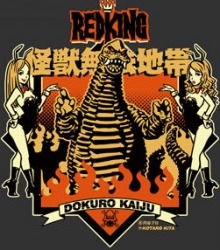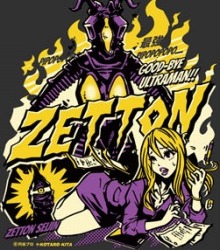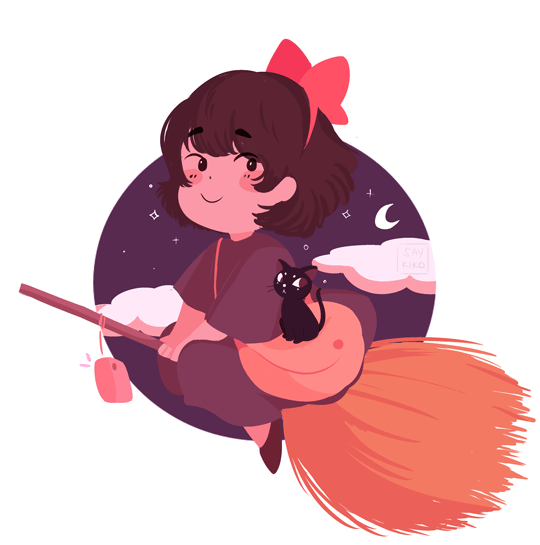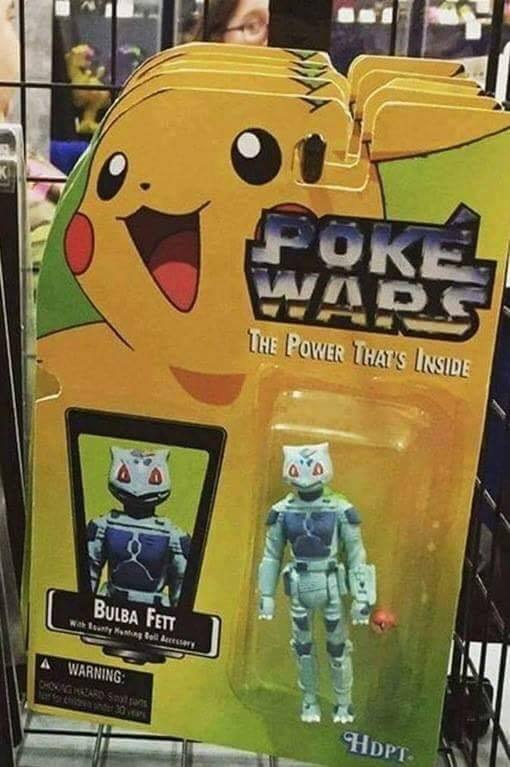World's laziest artist. I will probably be talking about toy robots, video games, and other childish pursuits a lot, but some relatively respectable music, art and science discussion may slip in accidentally from time to time.
Don't wanna be here? Send us removal request.
Text
My Tears of the Kingdom Review
Hello, I guess this is a followup to my “Top 20 Zeldas of 2021” list from last year, since I just beat the new Zelda game, Tears of the Kingdom, and now I need to find out where it fits in the rankings. I think this is going to end up being more of a proper review than anything I wrote in that list, though, because I have… well, a lot to say about it. I’ll try not to spoil anything major, but if you want to go in completely blind you may not want to read this.
Before getting into the review itself, let me preface this review by making two statements:
Firstly, I think I played this under the worst circumstances possible. In mid-April I decided to replay Skyward Sword since even though I played it when the remaster came out, I never put it into ~the document~ (long story don’t ask). Still enjoyed it, and had a hankering for more Zelda, so I decided to restart Breath of the Wild, which I got maybe halfway through a couple years ago but never finished. When I started doing this I didn’t actually realize that Tears of the Kingdom was releasing so soon, and I ended up finishing BOTW just a few days before TOTK released. Why this is a problem will become evident throughout this article, but basically, it’s just way too much video games.
Secondly, a sequel to Breath of the Wild, just, like, wasn’t the new Zelda game I wanted. I liked BOTW quite a bit but I thought its formula was just too large-scale and unfocused to act as a template for every future Zelda game. Using its more successful elements as a springboard for a slightly more structured, story-driven, somewhat traditional Zelda game would have been ideal for me. BOTW’s almost entirely freeform nature was cool once but I don’t think it needed to happen again. I’ll try not to hold that against TOTK though.
So let me start this review by just coming right out and saying that this is unequivocally, objectively a better game than BOTW. With one exception, every single element from BOTW has been expanded upon and/or improved in some way. Referring back to my Top 20 list, let’s address my criticisms of BOTW one by one and how TOTK fares in comparison:
1) Weapon degradation and weapon variety. These are both still in the game. There’s still a sort of unnecessarily huge amount of different weapon types (and there’s arguably double the amount since “decayed” and “pristine” variants exist for most of them). However both of these are rendered a little less annoying by the new “Fuse” ability, which allows (read: basically forces) you to fuse a weapon or shield with a monster horn, rock or basically any other item in order to increase its attack power or imbue it with a special ability (e.g., attaching a mushroom to a weapon will cause enemies to bounce off it, attaching a piece of ore will cause it to fire magic spells, etc.). I never quite got a full grasp on how the system works, but I think the weapon half of the fusion just informs how the fused weapon is wielded, i.e. as a one-handed sword (quick swing), two-handed sword (heavy swing), or spear (thrust). And then the fused item determines what type of damage it inflicts (slashing or blunt, basically), I think? So for instance, fusing a spear with a blunt object like a Frox tooth results in a “pulverizer”, which is wielded like a thrusting spear but is good for breaking rocks or armor but not so much in inflicting damage to enemies. Anyway, all this is to say that since you’ll inevitably have a ton of monster parts on hand to fuse, you have way more flexibility in the sort of weapons you can have in your inventory at any one time. This also gives monster parts more versatility than just using them to craft potions as in BOTW. I dunno who was crafting hundreds of elixirs with their stockpile of hundreds of Bokoblin horns in BOTW but it wasn’t me. Oh also you can attach the same sort of shit to arrows as well, which gives them the usual bomb/fire/lightning/ice ability but also you can like, stick a Keese wing onto one to make it fly farther. It’s cool in theory but you also have to pull up the quick menu every single time you fire an arrow, which becomes extremely obnoxious when fighting an enemy that requires tons of arrows. No spoilers but if you’ve played the game you know which one I’m talking about.
2) The cooking system. This is basically the same as it was in BOTW with a few extra recipes. This didn’t really bother me in my BOTW replay after I looked into how the cooking system works a little more. It just wasn’t explained very well in-game in BOTW. And TOTK just assumes you played BOTW and explains virtually nothing about any system present in its predecessor. TOTK adds a nice recipe book that keeps track of what meals you’ve made (or received) and how to make them, though, which is a huge improvement.
3) Enemy variety. Another huge improvement on this front. There’s easily twice the number of enemy types as the previous game. Additions include Boss Bokoblins which are big pig guys who command small armies of Bokoblins and look like what Moblins should have looked like in the last game, there’s flying enemies, there’s returning classic Zelda enemies like Gibdos (with a weird new twist) and Like Likes, there’s new mini-bosses like Frox (which took me almost the entire game to figure out how to fight effectively, but that’s on me) and Flux Constructs, and there’s actual proper boss monsters instead of fuckin Blight Ganon variants. Combat is basically the same aside from the fact that some new enemies require new strategies. I feel like silver enemies showed up way earlier in my playthrough than they did in BOTW. Like a sixth of the way through. And once they do, one silver enemy shows up in every camp and they’re just an utter bore to fight. Even with a reasonably high-powered weapon you’ve still got to whale on them for like 20 seconds while they lie helplessly on the floor. Not challenging, just annoying. Besides that though and the one mini-boss type I refuse to name for spoiler reasons, the monster situation is an improvement.
4) Lack of dungeons. This one’s kind of a wash-leaning-slight-improvement to me. Replacing the Divine Beasts from the first game are… kinda sorta actual dungeons! They’re much more sprawling than the Beasts, although they have a similar completion pattern in that you’re essentially just told to activate five consoles scattered throughout the temple and you can do them in any order and in any way you like. Three of the four main temples are basically open-air and you have a lot of creativity in how you’re able to progress through them, to the point where I felt I was cheating or breaking the game in a couple cases (Fire Temple I’m looking at you), which didn’t actually feel good to me because I feel like the reason I had to do that in those cases is because the “intentional” solution was not obvious! And then the Lightning Temple was inside a building and felt a little bit more like a regular Zelda dungeon, which I preferred. But I also kind of missed the unique mechanisms of each of the Divine Beasts. But also the temples are much less samey. Like I said, kind of a wash, but I didn’t HATE the Divine Beasts to begin with, so it’s fine.
5) I didn’t mention this in my Top 20 list, but it was something I noticed about BOTW on replay. The side quests suck. BOTW has 76 side quests which sounds like a lot but most of them are just “bring me six bear asses, which you almost certainly will have already accrued ten times the amount of by the time you reach me so you can just close out the quest immediately after receiving it,, and i’ll give you a reward of 100 Rupees, which is a pittance in this game”. TOTK has almost 3 times as many side quests (some of which have been upgraded to side ADVENTURES - an in-game distinction I was never really clear on), most are much more involved and more fun, and make the world between the story-related bits feel way more alive and fleshed out. Another huge improvement.
The one thing I think is a downgrade from BOTW is the new sage abilities vs. the old champion abilities. These are the companion-based abilities you get for clearing each of the four main story branches. In BOTW, each had a cooldown of several minutes, but were extremely useful. Mipha’s Grace revived you with full health if you died (useful for casual exploring, but not too overpowered to be useful in brute forcing combat), Revali’s Gale boosted you like 100 feet straight up (essential when exploring), Urbosa’s Fury was a lightning AOE attack basically mandatory for fighting Lynels, and Daruk’s Protection let you take a free hit once in a while. In TOTK, the abilities themselves are a huge downgrade. Sidon’s water shield I never quite figured out outside of the boss battle designed around it. Tulin’s just give you a horizontal boost when gliding (and I guess maybe can blow away monsters in combat, but usually isn’t useful for that). Riju’s is kind of like Urbosa’s in that there’s a lightning AOE but it’s way weaker and you have to waste an arrow to trigger it. Yunobo’s is maybe the one ability that’s an upgrade over his predecessor as you can fire him off like a cannonball and break through huge piles of rocks and shit. There’s also a fifth ability that I won’t mention because it’s kind of spoilery but also because describing it would make it sound cooler than it actually is. The main problem with the new abilities is how they’re activated. Basically after you complete one of the main quest branches, the sage will from that point on fight alongside you as a spirit, using their signature weapons. This is kind of cool and useful although having four or five ghost dudes running alongside you takes away from the feeling of isolation a little bit, but no biggie. But in order to activate a sage’s ability, you have to run up to them and press the use button to queue it, and then press it a second time to actually activate it. The reason this is bad is because in combat, the time when you most often want to make use of these abilities, the sage spirits are fuckin running around and attacking, and you have to go find them. And they’re all the same color so you have to, like, take a second to pick out which is the one you want to use. It’s particularly egregious with Riju, who fights with melee weapons but whose ability is ranged, so you have to run up into the mass of monsters where she’ll be fighting to set up her ability, then retreat to actually use it. The BOTW champion abilities could be used anywhere with a single button press. What the fuck!
So aside from the last bit, that’s big improvements all across the board. And as I already said, TOTK’s just overall an objectively better game than Breath of the Wild. So what’s the problem?
The problem is that a better version of BOTW is practically ALL THIS GAME IS. And at the risk of making assumptions, that seems to be all that it ASPIRES TO BE. A lot of people have dismissed Tears of the Kingdom as being “BOTW DLC” and while that’s an utterly laughable notion from, like, a scale standpoint - this game has easily twice the amount of content of BOTW - when, looking at, like, the TYPE of new content, I don’t think it’s that far off the mark.
So, so much of this game is “here’s all the stuff from BOTW again, just in a different form”. You need to activate a dozen or so towers to unveil the entirety of the map. There’s a gated tutorial area where you get all your Zonai powers, which are conceptually the same thing as BOTW’s Sheikah runes. There’s 120 shrines in which you have to solve puzzles using said powers. There’s four story paths to complete involving the four major races culminating in a dungeon in which you receive a power from a warrior from one of said races, and after these four branches are complete you can face the main antagonist in and/or above and/or below Hyrule Castle. There’s 12 collectibles scattered around the world from which Link can obtain a memory of a past event (TOTK has more interesting memories but the way to obtain them is more boring. P.S. fun fact you can spoil yourself to the game’s major twist almost immediately at the start if you go after all the very-easy-to-obtain Dragon Tears first like I did). And so on. And like, the stuff IS technically new and different, but it’s new and different in the way that Jakku is new and different from Tatooine. Which is to say, not that much.
What seems to be one of the game’s biggest points of praise is the Ultrahand/Zonai Device system, which allows you to build structures and vehicles by adhering different mechanical parts together. This is kind of fun and the physics system is surprisingly robust, but outside of requiring it to solve some of the shrines it’s not too integral a system to the game. Also most other devices become pointless once you realize you can cheaply build a hoverbike out of two fans and a control stick and fly goddamn wherever you want in the whole map (100% necessary to do in the Depths to remain sane imo… more on that in a moment). It’s fun, you can do silly things, but I kind of got that itch out of my system when I played Garry’s Mod 18 years ago. I’m glad people are having fun with it, though, and I guess I’m even more glad they’re able to.
A criticism that sounds like a huge strike against the game but surprisingly isn’t is the fact that the entirety of the Hyrule map is reused from BOTW. A lot of areas have undergone changes as a result of the catastrophic event that begins the game, but for the most part the differences aren’t massive. I’ve compared it to pre- and post-Cataclysm World of Warcraft a few times now but I don’t think anybody I know understands the reference, but it’s a perfect one, so y’all’s loss I guess. One major change in the overworld is the addition of caves - they did a really good job keeping them feeling fresh and distinct from one another and they further cement the fact that Hyrule was constructed by hand by the developers instead of just being generated from a heightmap like so many other open world games. It’s one of those things that’s like, I can’t believe this wasn’t in the first game, it fits in so seamlessly.
If Hyrule was the only map in the game, I think the asset reuse would be a whole lot less defensible, but it’s not. There’s two other levels to the map, the first of which is the Sky, which consists of a bunch of floating islands hanging motionless over Hyrule in a very Skyward Sword-like manner. The largest of these islands by far is the starting area, which is roughly the same size and function as the Great Plateau from BOTW. The islands are otherwise pretty small and sparse. You can get to some using the towers (which launch you like a mile into the air), but some of the more remote ones require you to use the time-reverse ability on pieces of debris that fall from the sky (or if you’re like me and don’t realize this is the intended way until near the end of the game, build a flying bicycle). It’s very pretty up there, with some lovely autumnal foliage and perpetually sunny weather, and you can see the entire map of Hyrule beneath you, which is pretty impressive. There’s a surprising amount of asset reuse among what few islands there are in the Sky, but there’s enough unique content that it again doesn’t bother me that much. It’s the one thing that feels like something truly new for this game, even if it is cribbed from another Zelda. I don’t mind it… it’s nice up there.
What is not nice is the third map, the Depths. The Depths is a massive underground cave that is below Hyrule. It’s huge; the same size as the Hyrule map. In fact, it IS the Hyrule map, for the most part, with the heights inverted (canyons become high ridges and mountains become deep valleys) and anywhere there’s a body of water in Hyrule, it’s represented with a solid wall instead in the Depths. To be clear, I’m almost certain this is meant to be obvious, not, like, some sort of lazy trick. But the entire Depths does feel unbelievably low effort. When you first arrive, the entirety of the Depths is completely pitch black and you have to activate “lightroots” (of which there are 120, located in the same places as the shrines in the overworld) to light the surrounding area and clear the fog of war on the map screen. However, even when the Depths are fully lit, it’s all a dark, gross monochrome turquoise color. The whole thing is riddled with tons of identical copy-pasted spooky trees and roots and rock formations and every single part of it looks the same except for the area under Eldin, which looks the same but also has some lava. Roughly 50% of the floor throughout the entirety of the Depths is covered in “gloom”, which is identical to but distinct from the “malice” from BOTW, which semi-permanently reduces your heart meter if you stand on it too long. Getting around it is a fucking nightmare due to its size and the complete lack of consideration in making it traversible like the overworld. And aside from a Yiga Clan-related questline (which contains the majorly useful Autobuild ability despite being completely optional) and two of the temples, there’s not a whole lot down there besides - get this - all the DLC exclusive and amiibo-activated armor and weapons from the first game (and that reminds me, since I haven’t had a place to mention it elsewhere, there’s only like half a dozen new armor sets in the game, everything else is from BOTW). The other purpose of the Depths is just to be a harvesting area for Zonaite and by proxy Zonai Charges and Crystalized Charges, which act as fuel for Autobuild and for increasing your Zonai Device battery meter (which is all rather poorly explained in game btw). And grinding for that critical shit in this hellhole is misery. God, I hate the Depths. One of my least favorite areas in a game, ever. If you only go down there to fulfill questlines and not to get all the collectibles like I did, though, I guess it might be tolerable. Trying to be at least a little charitable here.
One last thing, and it’s about the story - I won’t be discussing the plot, so no spoilers. BOTW set a weird precedent in that the game itself didn’t really have too much of a story outside of the four Divine Beast quests. All of that game’s “story” happened in the past, and is presented in flashbacks and memories. You wouldn’t think they could (or should) do the same thing in TOTK, but they somehow manage to, which is kind of impressive. The story is more engaging and interesting than BOTW’s imo, and it has some interesting Zelda timeline implications. I don’t really give a shit about the idea of all the Zelda games belonging to a cohesive timeline
I closed out my BOTW review in the Top 20 list by calling it innovative and describing it as Nintendo taking “uncharacteristically huge risks”, and I stand by that. In comparison, Tears of the Kingdom feels like the complete opposite. It’s safe. It does all the same shit again - granted the shit is at least GOOD shit - with very little that’s truly, truly new. I think anyone who disagrees with this is deluding themselves. It’s shockingly un-Nintendo-like. There are a few exceptions (looking at you New Super Mario Bros. U), but Nintendo rarely goes back to the well to quite this degree. The closest thing the Zelda series has had to this is Majora’s Mask reusing most of Ocarina of Time’s assets - but they were used to build a completely new world and narrative. I guess there’s also, like, Super Mario Galaxy 1 and 2, but it’s not as if SMG2 reused half the levels from SMG1 with new stars in them, you know? Also both of those examples came out only two or three years after their predecessors! It’s, frankly, hard to see why this game took six years to come out. This doesn’t feel at all like six years of new work. I mean, I guess games take longer to develop now, and I’m anti-crunch and all that, so if that’s how long it took to make this game, that’s how long it took, but… I just don’t feel it’s really reflected in a final product built so heavily off its predecessor, especially when BOTW itself only took I think 3 or 4 from scratch. I kinda just wish those 6 years were used to develop something more, well, innovative. It almost feels like a replacement for TOTK than even a sequel. If you haven’t played BOTW, there’s almost no reason to now, just watch an hour-long “Breath of the Wild - The Movie” cutscene compilation on YouTube.
Having said all that - and holy shit that’s a lot more “all that” than I expected to say - I did enjoy my time with Tears of the Kingdom quite a bit, and probably would have even more if I hadn’t played BOTW start to finish in the weeks preceding it. I’m sure it’s more of a pleasant homecoming than an overstayed welcome to fans who played it years ago and have been hankering for more of the thing they loved. I don’t regret playing it or anything, and I had a lot of fun with it aside from the godforsaken Depths. Maybe just don’t play both games back to back.
Anyway let’s circle back to that Top 20 list and find a place for Tears of the Kingdom. In a world where BOTW didn’t exist, I think it takes its place at #4, and maybe even overtakes Wind Waker at #3. Yeah, for all my negativity, it’s still undeniably that good. But I don’t know what to do on a list with both BOTW and TOTK on it. TOTK is the better game, but does it lose points for lack of originality? Does it take a higher place and BOTW gets knocked down? I don’t know. Who gives a shit. I just wanted to spend 4 hours ranting about a game I sunk like 200+ hours of my life into. No more Zelda, no more open world games, no more video games, it’s time to join the farming commune.
3 notes
·
View notes
Text
Top 20 Zelda games of 2021
As many of you may or may not know, I spent roughly the first nine months of 2021 playing (or replaying in many cases) every single main series Zelda game. Since I don’t think I played more than maybe one game that actually came out in 2021 I couldn’t very well do a Top 10 for the year, but I’ve been wanting to rank the Zeldas for a while so people would yell at me about putting LTTP so low, so this is how I have decided to spend the last day of the worst year of my life. I did not proofread this. Enjoy!
#20: Link’s Crossbow Training Okay obviously this one doesn’t really count but you can’t have a “Top 19” list. It’s actually pretty decent for what it is, which is a peripheral pack-in that reuses all of its assets from Twilight Princess, but it’s still, y’know… that.
#19: Zelda II: The Adventure of Link Here is my actual least favorite Zelda game. Utterly miserable “Nintendo hard” bullshit with extremely little to make up for it. Having both lives AND a leveling system is idiotic; it’s too hard to survive long enough to get enough XP to level up after a certain point in the game. Also the wretched swordfighting system becomes completely untenable with some of the later enemies and it feels like you’re engaging in a damage race guessing game. Maybe I’m just uniquely bad at this game? I dunno. I guess I appreciate that they were trying to do something different from the first game, but, like Castlevania II, I think it’s an abject failure. Maybe the only Zelda game I think is truly BAD.
#18: Four Swords (first time playing) Four Swords, like Link’s Crossbow Training, ends up low on the list not so much because it’s bad but because it’s just a nothingness. It’s essentially just a bonus multiplayer mode included with the GBA version of LTTP. You just run around a semi-procedurally-generated (I think?) map collecting Rupees and occasionally there’ll be some enemies or mild puzzles to solve to progress. There’s very little else to it, although the very nice pixel art presages Minish Cap’s. The hook here is the multiplayer facet, which I experienced by mapping two Links to the left and right sides of a single controller and controlling both simultaneously myself. It was a very unique way to experience a game, and fortunately very little in it requires both Links to move/act in concert. It made the bosses pretty hard though!
#17: Four Swords Adventures (first time playing) Something you’re going to see a lot in this list is me factoring a game’s aesthetics into its ranking a disproportionately high amount, and FSA easily takes the biggest hit from this. This feels for all the world like a fangame to me. It uses the Link sprites from Four Swords (good), but lifts most of the rest of its graphics from LTTP (bad). There’s some new spritework that ranges from fine to terrible, and then there’s a handful of digitized Wind Waker models which look spectacularly out of place. The end result is a gross, amateurish hodgepodge of a game that feels devoid of any sense of a unique identity. The actual gameplay is a linear, level-based pastiche of the Zelda formula, which isn’t the worst experience in the world but strips out a lot of the series’ exploratory appeal. Maybe it’s more fun in multiplayer, even though it seems to utilize the multi-Link mechanics more sparingly than the other multi-Link games.
#16: Tri Force Heroes (first time playing) Yet another multiple-Link game that’s probably not primarily designed to be experienced in single-player, but that’s how I played it and that’s how I’m going to review it. This is a lot closer to the original Four Swords in gameplay than Adventures, except that it has actually properly designed stages with real puzzles and obstacles and is much better off for it. That said, it’s still pretty shallow and requires you to sink an enormous amount of time playing the same stages over and over in order to 100% it (not to mention the 24-hour-cooldown gacha stuff that makes it feel like a mobile game you can’t throw money at to speed up). The story (really just a premise) is also extremely dumb and low-stakes and may as well not exist.
#15: Spirit Tracks (first time playing) I will address most of my problems with Spirit Tracks in my entry for Phantom Hourglass, as they all apply to this one as well. Having said that, Spirit Tracks is a mild improvement over its predecessor in most respects: a more unique premise, better story, better dungeons. It’s also one of the only Zelda games to feature Zelda as an active protagonist as opposed to being damseled or just being a non-presence for most of the game for one reason or another, which is nice I guess. Having said that, it’s completely brought down by the titular train mechanic. It takes goddamn forever to travel from one place to another, which this game requires a lot of, and you have to be paying attention for the duration of a trip because you need to kill enemies or remove obstacles from the track constantly or else you have to start over. And unlike pretty much every other Zelda game with an overworld, you never unlock any sort of warp/fast-travel ability to get around quicker - there ARE teleports you can activate on the tracks that warp you from point-to-point, but they are literally never in places that would ever be useful. One of the most tedious Zelda games out there.
#14: Phantom Hourglass Phantom Hourglass’s biggest downfall is that it was designed for the DS. First of all, it looks like shit, like all 3D DS titles do, with the low-res textures deforming around the low-poly models in the most aesthetically unpleasing way possible. And of course, the controls are nonsense - having to use the stylus for general movement control adds nothing and never feels good. The game also suffers for trying to recreate Wind Waker on a smaller scale and, as a result, inviting negative comparison to its far superior predecessor. Also, much has been said of having to do the Temple of the Ocean King or whatever it’s called like 5 or 6 times over the course of the game, and while there’s ways to make that experience slightly less tedious on repeat visits, even in the best of circumstances it’s still extremely obnoxious and was a bad idea.
#13: A Link to the Past Okay, this is the one I know I’m going to catch the most shit for. Let me preface this by saying there is a pretty wide gulf between Phantom Hourglass (which is in the “bad third” of the list) and LTTP (which is in the “decent third”). The thing about LTTP is that I never played it as a kid. I didn’t sit down and give it a serious chance until like 2007, when I had played most of the 3D Zeldas released up to that point. At the time of its release I’m sure it was a massive revelation and a huge improvement over Zelda 1, and influential to games that came later, and I know it’s a lot of people’s childhood Zelda. But to me, with no nostalgia for it and with the perspective of the current day, it’s just like, the absolute baseline Zelda experience that is perfectly fine but doesn’t really excel at any one thing. There’s virtually no narrative, the spritework has the same jank that many early-SNES first party games did (I think the environments are quite nice though), it’s too dungeon-heavy, and the Dark World, while decent in concept, feels kind of half-baked. The game just kind of feels like a slog to me and every time I revisit it I struggle to get all the way through it without losing interest. I dunno what else to say. Sorry!!!
#12: The Legend of Zelda Once in a while I can enjoy sitting down and cracking the “puzzle” of an abstruse game - usually an older one - by doing stuff like mapping out the whole world and writing down all the in-game clues (had a good time doing this with Dragon Quest 1 and MSX Metal Gear in recent memory, and the Souls series has a modern twist on a similar vibe too). Zelda’s a pretty good game for it, especially with the manual on hand to gradually ease yourself into that mindset through the early stages, and that’s why it’s more enjoyable than LTTP for me, even if the later game is an objective improvement on pretty much all fronts. The second quest with its obtuse progression and hordes of Darknuts, Wizzrobes and sword-stealing Bubbles can fuck off though.
#11: Twilight Princess Twilight Princess had to have been the most anticipated Zelda game ever, right? Many sad people didn’t enjoy Wind Waker’s more lighthearted tone and art style and wanted “another” “serious” “edgy” Zelda game like OOT, and there was like a 4-year buildup to its release. And when it finally arrived, that’s exactly what TP turned out to be: Ocarina of Time, again. I feel like it was kind of a damned if you do/damned if you don’t situation for Nintendo, and the end result is by no means a bad game, but undeniably a cynical and uninspired one. It has a very similar map and follows a very similar progression to OOT, with a few new wrinkles that keep it just barely fresh enough to make it feel like its own thing. I felt this way about it at the time and it didn’t really change my mind on replaying it. If it’d been the only Zelda game I’d ever played I could see loving it… but it’s not. Also: it’s very ugly!
#10: Oracle of Ages The Oracle games are fairly inextricable from each other, so most of what I have to say about them will probably be said in the Seasons entry, but of the two I enjoyed Ages less. The dungeon puzzles were far more obtuse, to the point where I needed to reference guides multiple times. The time travel/parallel overworlds gimmick had also already been done better in previous games. Ages also takes the award for Zelda game I played the most times in 2021, with a total of three consecutive playthroughs (a “100%” Oracle experience requires 2 playthroughs of each, but I decided I wanted to play the unlinked version of Ages before the linked one for some reason. Not recommended).
#9: Oracle of Seasons Jeez I don’t even know what to say about the Oracle games, it’s all a blur now. Seasons was a way smoother ride than Ages, I do remember that. I like the season-changing gimmick more than the past/present one - at its core, it’s just yet another “parallel overworld” situation, but the puzzle-solving aspect of it felt smaller-scale and easier to grasp than Ages. Speaking to the duology as a whole, the linking aspect is kind of a neat idea and worth doing once (if only for the “true ending”), but I don’t know if it’s really worth playing it “both ways” like I did - the changes in the second game aren’t significant enough to warrant a revisit. The ring system is a theoretically fun mechanic that becomes murderously tedious if you’re a completionist (and technically impossible without cheating if you’re not playing on GBA - yes, you get a special ring for playing this GBC cart on a Game Boy Advance, and can’t get it on Virtual Console). All in all I see the Oracle games as nice followups to Link’s Awakening that are a little too bogged down with ambition to supersede the simple joy of their predecessor.
#8: Link’s Awakening It’s hard to say why I rate Link’s Awakening as highly as I do when I have no nostalgia for it and so many caveats about liking it. It’s very bad about holding the player’s hand (especially at the beginning), with multiple bosses explicitly describing how to defeat them. The one dungeon where you have to carry the big ball and smash the pillars is very obtuse and annoying. It’s the first Zelda game to contain a trading sequence and (I believe?) the only one in which it’s mandatory to complete the game. But something about it - the tropical island setting, the goofy characters, the overworld map that doesn’t waste a single screen - just delights the hell out of me. The Switch remake, despite its inscrutably inconsistent performance, is very pretty and adheres shockingly close to the original game. Its dungeon-building mode was a nice idea but kind of lame in practice.
#7: A Link Between Worlds A Link Between Worlds skirts the line between remake and sequel, but boy howdy do I like it so much more than LTTP. Part of it’s just the 20+ years of quality of life improvements made to the series being applied to the already-solid foundation of the original game, but there’s also a ton of new items and elements added to the game to give the dungeons a bit more variety and personality than they once had. The item rental system is interesting but flawed since although it allows you to play the dungeons in any order, it also means the dungeons didn’t have anything in them besides the boss and they also have to stick to a similar difficulty level. But I don’t play games to be challenged, I play them so I can fill in cells in a spreadsheet no one else will ever see. Also I thought the wall-merging gimmick was cool without feeling like too much of a crutch, and the Lorule/Dark World aspect was executed better than in the original. Sorry!!!
#6: Skyward Sword (first time playing) I’ve spent the last decade hearing how horrible Skyward Sword is, so I was very excited when they announced the Switch port (whose release coincidentally lined up perfect with my replay project) so I could play it and be a big contrarian by saying how much I loved it. And here we are! Seriously though, maybe it’s precisely because I was expecting to hate it that I was so pleasantly surprised by it, but I honestly really enjoyed my time with it. I can’t speak for the original version and how much (if at all) the remaster improved on its flaws, but I found the mapping-the-sword-to-the-right-stick solution to be perfectly serviceable (with the sole exception of now needing to hold a shoulder button to move the camera with the stick, rather than them just reprogramming the camera to move automatically to mitigate needing to do so). The sword gimmickry is sort of integral to the game’s mechanics so they really couldn’t have removed it entirely, but I think it’s kind of fun anyway! It’s certainly more engaging than mashing a single attack button like I usually do in Zelda games. Skyloft, like the Great Sea, is a fun twist on the typical Zelda overworld formula, although it does feel a bit empty out there. The hub town and its characters feel fun and fleshed out in the same way that Wind Waker, Minish Cap, and Majora’s Mask’s do, there’s just… not much else. It’s maybe the prettiest of the 3D Zeldas though and has the best girl Zelda.
#5: The Minish Cap (first time playing) I wasn’t really sure what to expect from The Minish Cap. It’s a game that tons of people apparently played but never held particularly strong opinions about, good or bad, which is weird for a Zelda game. What I got was one of the most surprising and delightful entries on this list. Minish Cap is a pretty small game - well, literally, in that you frequently shrink down to the size of a little mouse guy (an idea I have found very enchanting since the days of playing Micro Machines on Genesis) - but also in that it’s basically just a hub town, with a fairly small overworld surrounding it and only like four dungeons in the entire game. What it may lack in quantity it more than makes up for in quality, with charm oozing out of every square inch. Its Kinstone fusion mechanic makes interactions with NPCs feel a little like Majora’s Mask-lite (although the rewards are frequently completely pointless), and the few dungeons and their associated items have some of the most innovative ideas ever seen in the series. On top of everything, Minish Cap is one of the most exquisite looking 2D games I have ever laid eyes on. This has some of the best spritework and especially tilework I’ve ever seen. I forgot to mention Capcom when I was discussing the Oracle games, but who cares, THIS is their crowning achievement in the Zeldasphere.
#4: Breath of the Wild (first time playing) I haven’t actually finished this one yet but I spent basically my entire 2-week summer vacation playing it so I feel pretty qualified including it on this list. Breath of the Wild is a game that has been so hyped up to me for years that I thought there was no way that it could meet my expectations, yet it pretty much did. I thought I knew how big the game was and it’s so, so much larger than I ever could have believed Nintendo capable of. It makes Skyrim look like Bob-omb Battlefield. It takes the exploration factor of Zelda games like the original and Wind Waker and cranks it up 1000%. It’s an incredible experience for someone like me who relishes just exploring a big, natural-feeling world in a video game. It’s not perfect though! I think the hundreds of barely distinct weapons and shields could have been pared way down, and the degradation aspect doesn’t add much to the game besides inconvenience. I think the cooking system is okay in theory, but again, the ingredients list could have been whittled way down. Conversely, the enemy variety is bizarrely thin considering the scale of the rest of the game and I would like to have seen a larger bestiary. And while the shrines and Divine Beasts are fun and creative, they don’t really make up for a complete lack of proper dungeons. At the end of the day, though, Nintendo took some uncharacteristically huge risks with this game and they almost categorically paid off, so these minor protests doesn’t necessarily bring down the game as a whole for me, and hopefully can be addressed in the sequel.
#3: The Wind Waker I like the ocean and I like exploration in video games and The Wind Waker is a Zelda game about exploring the ocean. It also got me through a particularly rough spring semester my first year of college. But on top of that I also think it’s just a good game on its own merits. It’s probably to date still one of the most unique settings of a Zelda game, but it anchors (pun) itself to the series lore without feeling overly dependent on it. Even though its lighthearted tone and cartoony art style were its biggest point of criticism at release (less so now thankfully), I think it’s one of Wind Waker’s biggest strengths. The worst thing about it is probably the fact that you’re railroaded along the main storyline for a shockingly long time before you’re allowed to explore freely, and that the first dungeon is a terrible stealth mission. I don’t think I enjoyed it as much on revisit as I did my original time through (this year’s being the Wii U HD version, whose “upgrades” I don’t think make it look especially better than the original), but it still holds a special place in my heart.
#2: Majora’s Mask I got the N64 version of Majora’s Mask on release and bounced off it so, so many times before finally giving it a second (or technically like fifth) chance when the 3DS remake came out. Some people dog on the remake, saying it changed too much, but I think it’s all for the better. N64 MM is ROUGH. It was way too ambitious for that console, and even with the expansion pack it struggled to run and looked like shit. The 3DS version is an incredible visual upgrade, and the various quality of life improvements it also makes are what finally got me to break through its rough starting hours, so to me it’s good. The game itself is incredibly expansive and deep but you’re not forced to engage with all of the sidequests and stuff if you just want to experience the main story. You can put as little or as much as you want into this game and you will be rewarded for it in kind. It has probably the richest cast of characters of any Zelda game and it’s a challenge and a delight to see some of their stories through to the end. This is, understandably and justifiably, the most polarizing Zelda game, I think. It’s probably the toughest to get into but it also feels like the most fulfilling.
#1: Ocarina of Time Look. I know OOT has received something of a critical reevaluation in recent times after years of being considered the best game of all time by pretty much everyone. But I was ahead of the curve on that shit. OOT was my first Zelda game in 2000 and I don’t think it’d be too much of an overexaggeration to say it’s one of the games that most changed my life. I still love it dearly. I understand it’s maybe not as revelatory in the modern day as it was at release, but it did codify or invent a lot of the stuff that might make it seem passé now. I think this may be a reverse LTTP situation where my opinion is tainted by nostalgia, but this is MY list. Also, the 3DS remake is incredibly good in a “this is the way you remember this game looking but it actually looked way worse” way, and changes much less about the game than the MM remaster did. That’s all thanks for reading
(Note to Tumblr followers: this blog is still dead I just needed someplace to post a huge wall of text. Follow me on twitter @cyraptor where I am actually active(ish). Transformers Legacy is not coming back please don’t ask me about it. Thank you)
3 notes
·
View notes
Video
tumblr
when you tryna chill but your siblings love annoyin you
824K notes
·
View notes
Note
What are your personal top 100 Mario Party minigames?
Contrary to popular belief, there are only 36 Mario Party minigames. Here they all are, ranked by quality.
Fuck Truck
Downward Dogpile
Bank Shank
Heart Kart
Friends In “High” Places
Russian Roulette
Weekend At Yoshi’s
Zap ‘Em!
Cobra Try-Angle
Bean Police
Turd Nerd
Donkey Bong
Global Thermonuclear War
Role Patrol
Polar Panic
Sky Writers
Face/Off
Bripe It Up
Fall Brawl
Bread Alert!
Special Delivery
Funker Dunker
NES Classic Bundle Scramble
Baseheads
Roller Controller
Gene Ween
Dean Ween
Pachinko Dance
Bumper Humper
Hank’s For The Memories
Bangers And Cash
Camel Clubber
Another Frustrating Take On An American Gladiators Classic
Bile Bandits
Ska Skeptic
Psychic Farce
2K notes
·
View notes
Photo
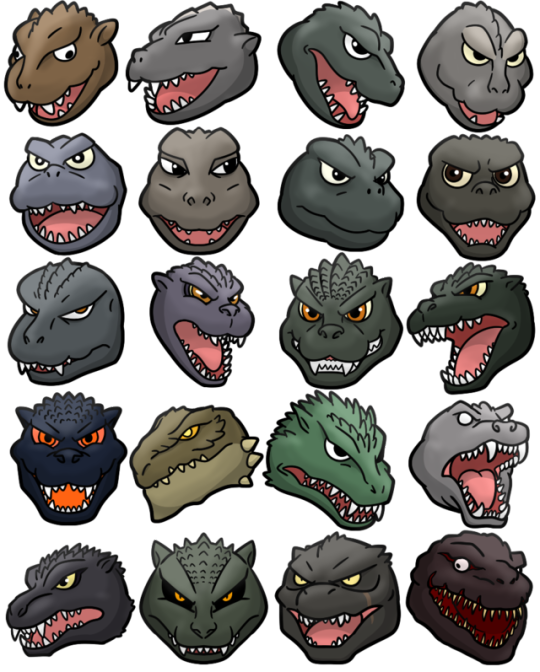
Here’s all the boys in one image. Looking back, I probably should have been more consistent with sizing, but ¯\_(ツ)_/¯
2K notes
·
View notes
Note
I think iowasi might mean the "Stenonychosaurus” model that almost invariably appears alongside Dale Russell’s original dinosauroid in print? Here’s a pretty clear picture of it alone (thanks GIS):
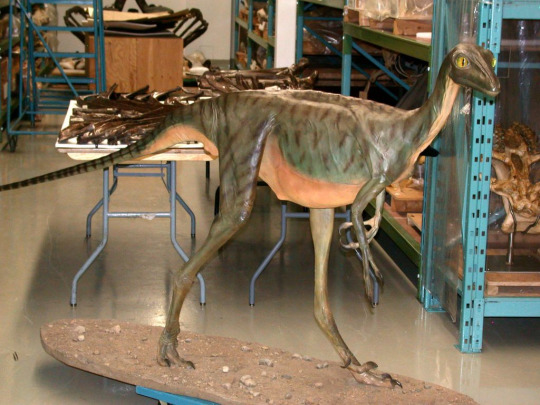
(Credit apparently goes to Michael J. Ryan, Ph.D. for the photo)
Do you happen to know/have any good references for the "dinosauroid"/alien Troodon? Not the bipedal "humanoid" one, but the really uncanny normal one, which looked like a long lizard? I'm going to make an actual alien based on the design and I can't find a lot of pictures, shockingly!
I’m afraid I don’t know what you’re talking about; sorry! Maybe one of my followers will?
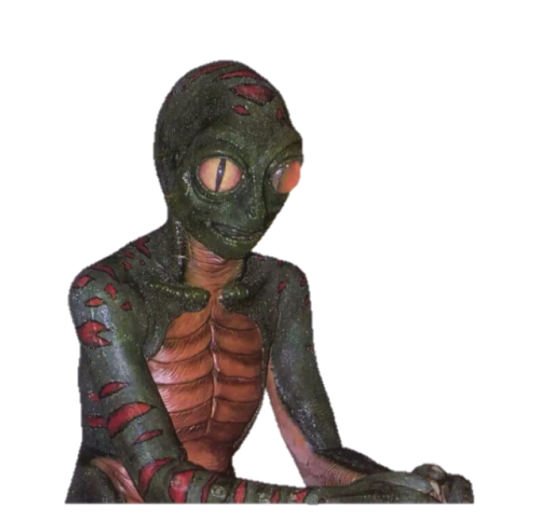
32 notes
·
View notes
Video
This is the Mr. McMahon otter that I was talking about
tumblr
94K notes
·
View notes
Photo
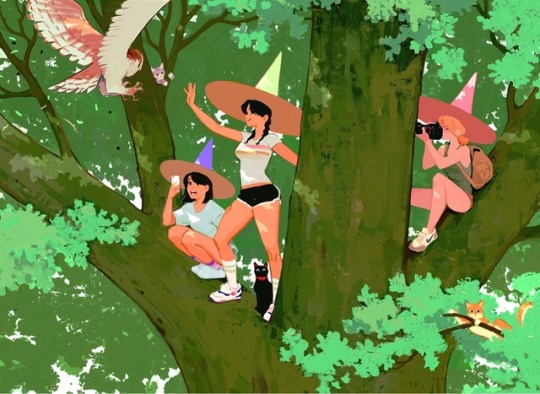
Witches climbed the tree and greeting the owl. Thank you everyone for the supports!!
11K notes
·
View notes
Photo
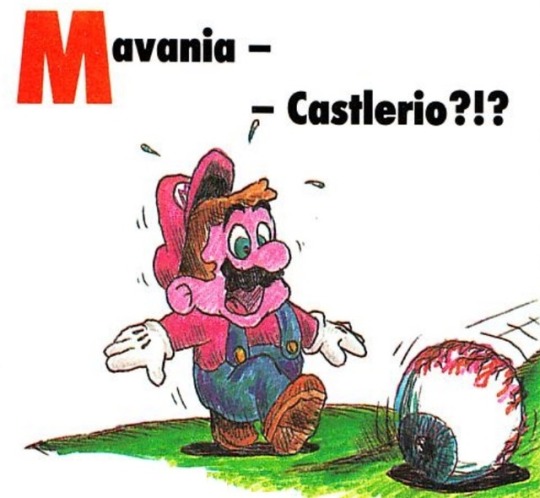
Illustration from the German Club Nintendo magazine.
196 notes
·
View notes
Text
official ranking of every meowth sprite on bulbapedia

Very Soft, Very Catlike, this Little Boy is doing a nya and i cannot deny he brings a smile to my face

not bad. he looks Very Clever and we see the first signs of meowth’s personality becoming evident. not particularly my favourite, but it’s good.

bode

this one is Nice Enough, i like it, he is very friendly looking and fun. a Fun Boy.

WONDERFUL.. he is laughing!!! a Snickering, Giggling friend. this is one of the best.

Very Good! this one isn’t as telling of his personality, but it really captures the Essence Of The Modern Meowth, and i appreciate it.

this is an improvement in the expression of meowth’s personality! his floppy feet are Good and Present in this fun sprite

nothing really added here, i like that his mouth is wider, it’s more like the anime, and i like the classical nya pose. very Average.

this one builds on the heartgold/soulsilver sprite, now he is nya-ing with both paws. i like the battle-ready stance he appears in, this Small Boy looks Ready To Fight
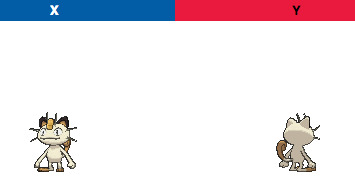
why. why does he look so empty. he is a Slate, he is a Void, i want to rescue him. there is a lack of personality in here that i feel could really be added by a handful of adjustments even in his most neutral pose. overall, unexciting to look at. nonetheless, a Friend
22K notes
·
View notes
Note
do moschops have puss puss?
NO!!!!!!!!!!!!!!!!!!!!!!!!!!
But for real, they would’ve had cloacae.
42 notes
·
View notes
Video
youtube
Drew went through a journey with this joke.
155 notes
·
View notes



